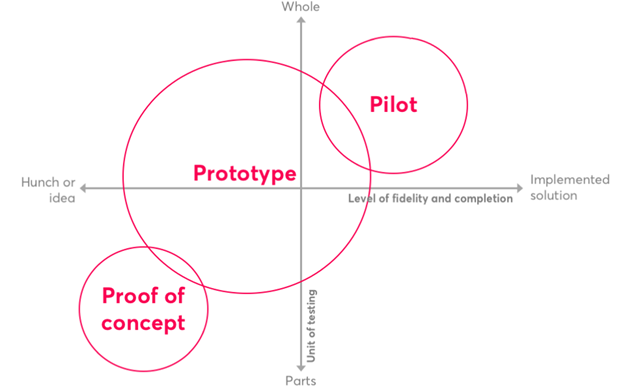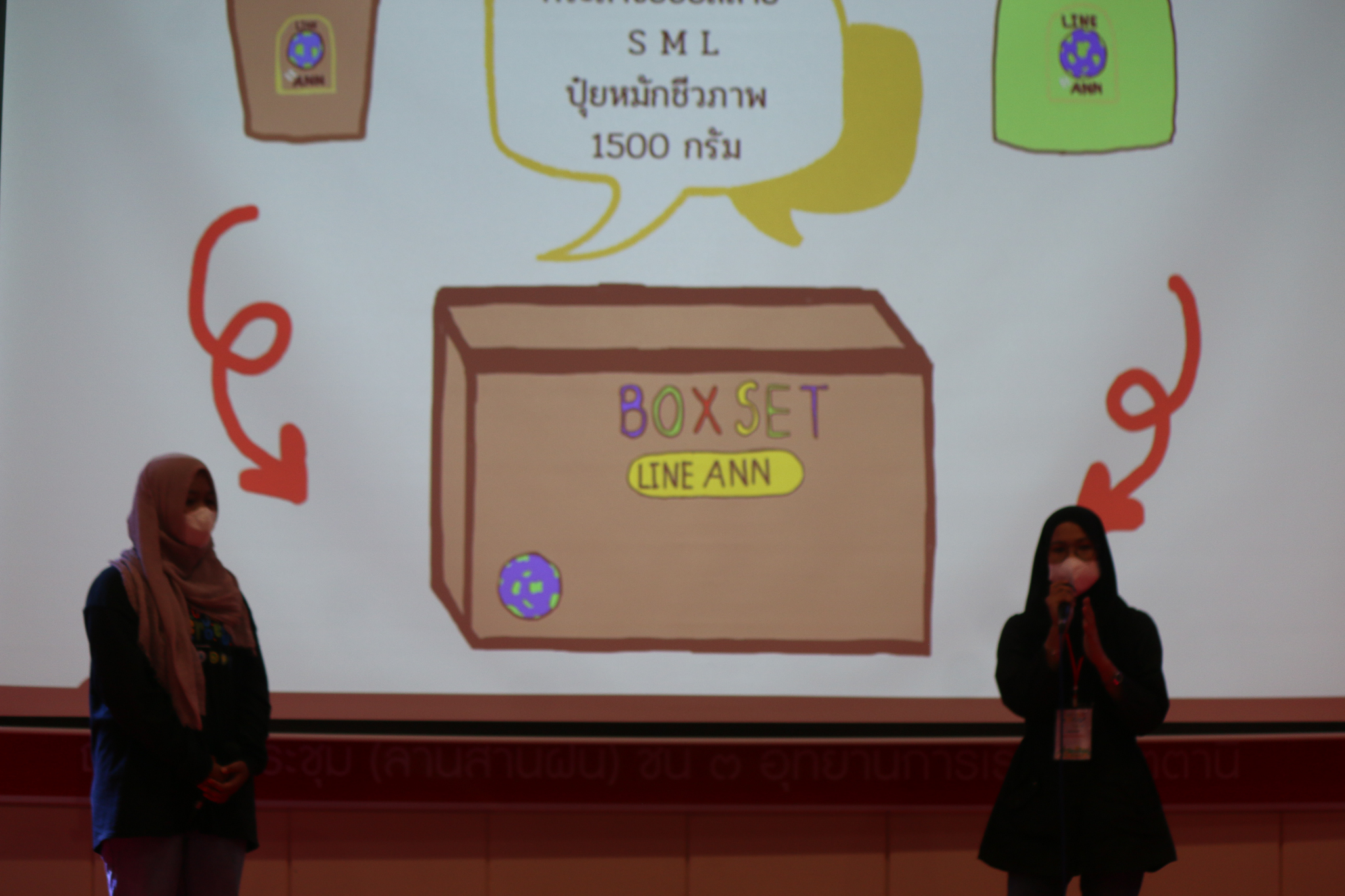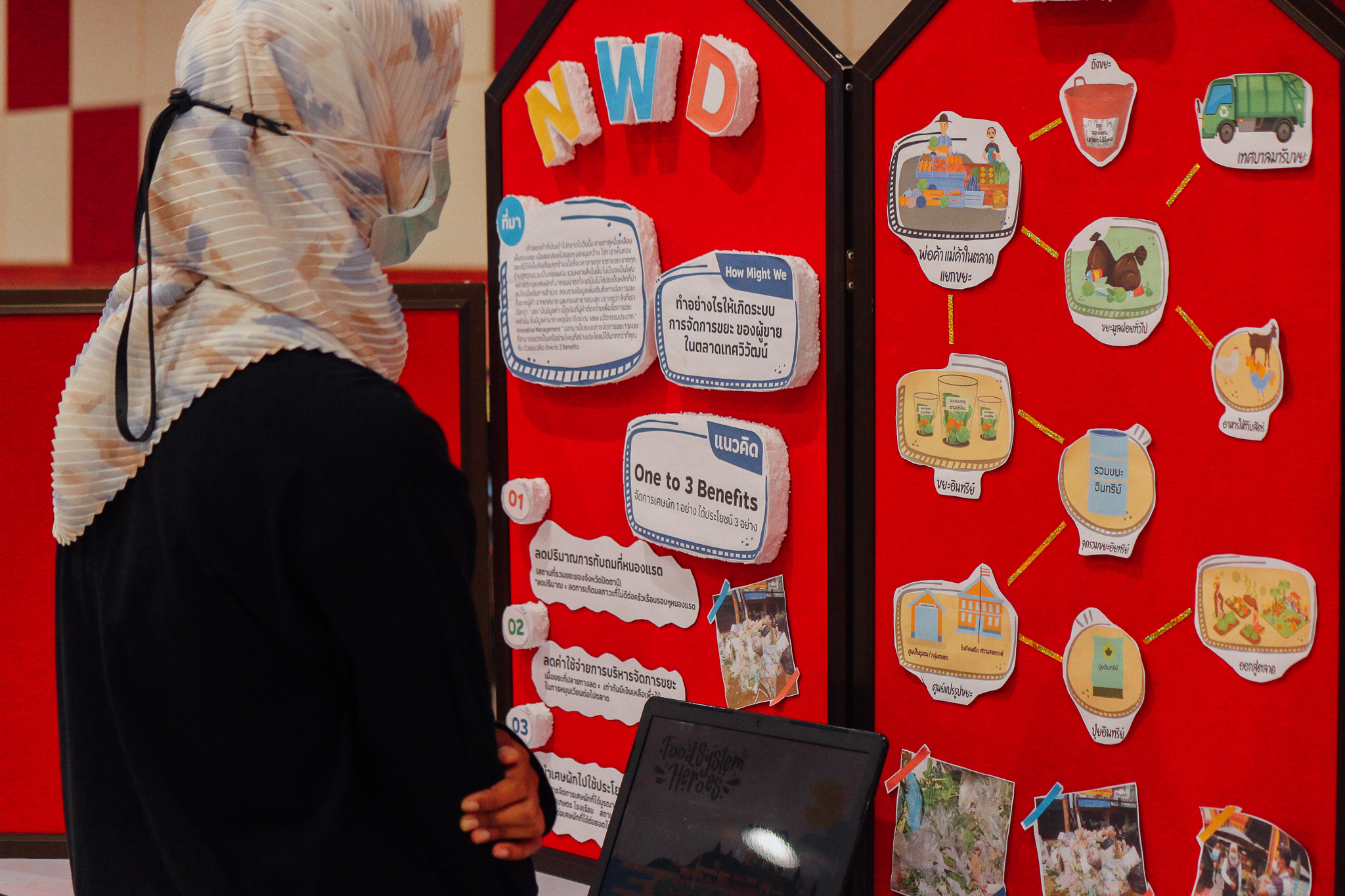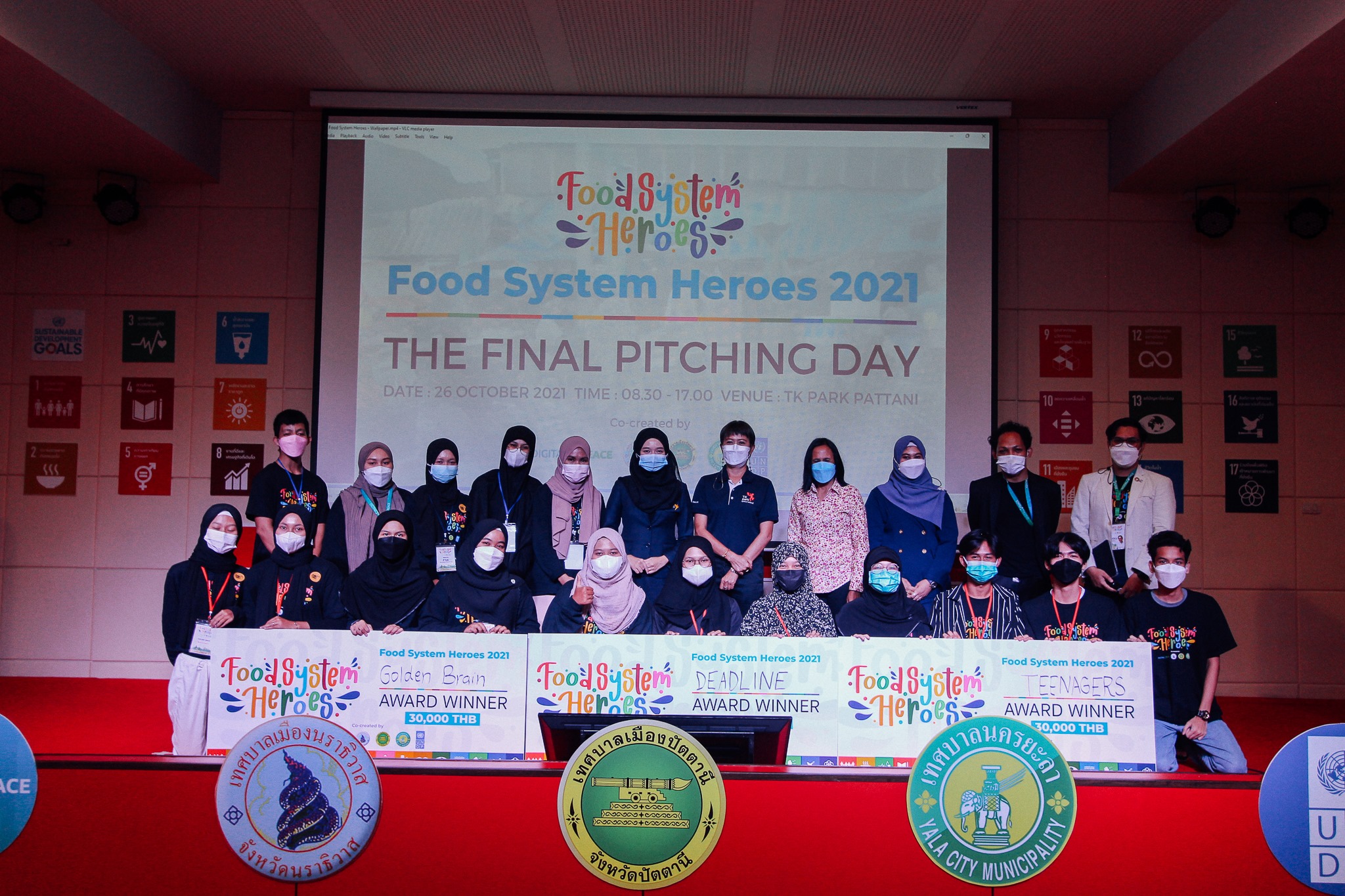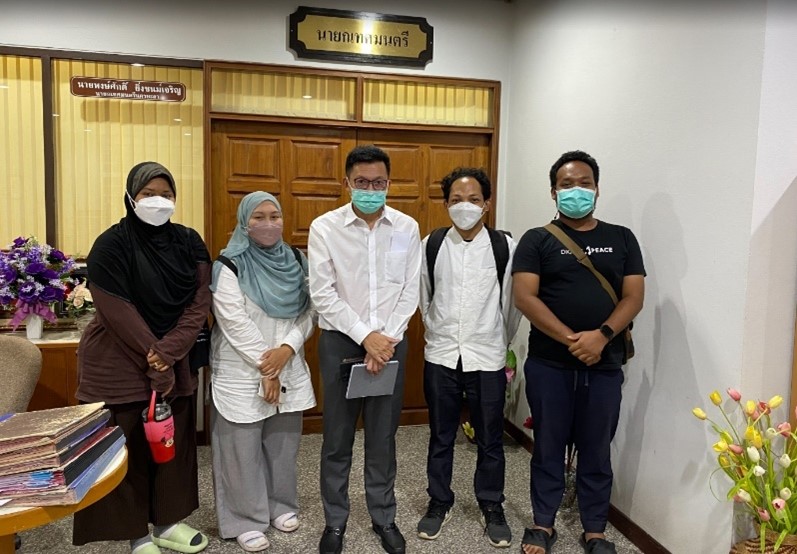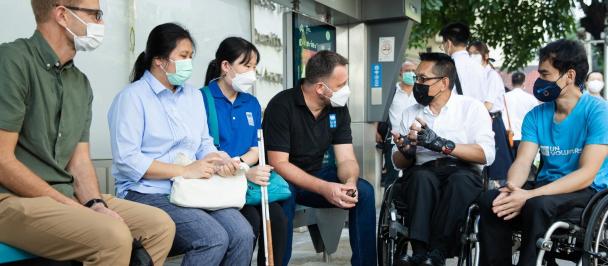Intro
Our previous blog featured the “Food System Heroes” initiative, a local youth innovation challenge in collaboration with three city municipalities in the Southern border provinces of Thailand (Narathiwat, Pattani and Yala) as part of Southern Thailand Social Innovation Platform focused on transforming the local food systems. Applying Youth Co:Lab learning journey, the initiative aims to empower youth to become local agents of change and explore youth citizen-government collaborations. Also, this initiative showcases how UNDP’s Accelerator Lab used the concept of grassroots innovations and a solution mapping approach to empower local change agents. More than thirty local youths actively participated in two training sessions to co-create solutions for improving their fresh markets but first began with the search for grassroots innovations.
One of the key topics discussed with the participating youths is that the innovation development process is not just an option but a must among complex development issues and where traditional methods no longer work. Innovation is not just the use of technology but also the discovery of solutions invented and used by those directly affected. With limited resources, this group of people has to think and explore new approaches on their own. This is what we mean by grassroots innovation.
Indeed, searching and understanding existing local solutions leads us to unusual and different approaches. What’s more, it also shapes our understanding of the context through narratives, which will be the raw material for co-creation that truly engages everyone.
In the early stages of the Food System Heroes, the youths learned how to develop grassroots innovation mapping in order to identify existing innovation in their area and discover real unmet needs and pain points. The result of the solution mapping process is the solutions themselves and making sense of the problems in the context of that area.
We are (almost) there
With the solutions mapping process, the youth teams were able to identify the challenges they were interested in. At this point, the youths were more than ready to take action to change the world for the better. But, wait, something significant was missing. “Innovation amateurs talk good ideas; innovation experts talk testable hypothesis.” Michael Schrage.
There is a saying, “Innovation amateurs talk good ideas; innovation experts talk testable hypothesis.” by Michael Schrage. It’s not wrong for us to discuss some great ideas for solving problems. Definitely, we all get excited about it. Finding the answer to a challenge sounds sexy because it’s like playing a game. You enjoy setting a goal and using your skills and creativity to develop a solution that could change the world. But what we tend to neglect unwittingly (or intentionally) is to ask ourselves: “Do we really understand this issue? And there are more questions like,
- Is this really a problem?
- How important and urgent is it?
- Why is this still a problem? Why hasn’t anyone tried to solve this problem before?
- Is there currently a way to fix it?
- Is our understanding of the problem consistent with the understanding of those affected?
- Will our ideas fit the context of the problem?
- Is there any other better method?
- Will those involved in the problem accept this approach?
These questions bring you to self-evaluate - if you truly understand the situation or you just create a hypothesis. To make sure we know what we know, we put our understanding in the form of a statement, for example:
- People have trouble finding products in the market. (Yes/No?)
- The equipment developed by the team will help solve the problem. (Yes/No?)
- Stakeholders consider the challenge significant and participate in the project. (Yes/No?)
These three statements were what our youth teams felt they had understood. But what if they ignored these questions and started implementing, investing, and launch then it turned out that they were solving the wrong problem? It would be a waste of resources, money, time, and human resources that cannot be recovered.
Anticipating the risk of jumping to solutions, the Accelerator Lab introduced these participants to a process known as… drum roll please…. Experimentation!
Experimentation?
Experimentation is the process that turns your idea into something you can test quickly (in a day or a few months) and cheaply. It is a structured process that helps us learn what works and what doesn’t. We also must keep in mind that experimentation is,
- NOT any initiative where a decision has already been made,
- NOT any initiative where you don’t have a process to learn.
Experiments bring tangible evidence early in the process when it is still possible to change the direction without big failure.
Three Experiment Methods
You may have come across a range of different approaches for testing and developing solutions, including proof of concept, prototypes, and pilots. They all have something in common and aim to:
- Identify and challenge assumptions by “making things real” and testing them
- Accelerate learning by finding out what works and what doesn’t without investing large amounts of time or resources
[Figure 1] ADAPTED FROM NESTA: PROOF OF CONCEPT, PROTOTYPE, PILOT, MVP – WHAT’S IN A NAME?
Proof of concept
A proof of concept often involves a small exercise to test the real-world potential of a vague idea. This isn’t about delivering the idea but demonstrating whether it is feasible. It should be used in the early stages when you first have an instinct about an idea.
Case from Pattani: Team Teenager
In the beginning, the team held onto the idea that “people were confused by how the goods are displayed at the market.” This was based on the team member’s personal experience. They are young and unfamiliar with the traditional market.
We asked the team if this conclusion was really the problem? And whose problem was it? The team visited the site and used questionnaires and interviews to collect data.
What was found was that only a few people had this problem. In fact, most of the local people were already familiar with the market. Only very few people experienced such confusion, and they were tourists.
Interestingly, the team discovered a different insight. Stores located at the very back of the market were not visible, and therefore only a few customers visited them. Their business did not go well.
ฺBased on this new (unintentional) insight, the team then revised the statement to “the merchants located most remotely in the market had fewer sales because the number of passersby was less.” The team decided to develop a platform to help promote these less visited stores.
The revised statement might not look different from the original one. But a small change means a lot for innovation development. Changing questions and target customers also alters the perspective and process of understanding the problem.
If the team had not tested their idea, they would probably have ended up developing a product that no one wants.
Prototype
A prototype is the visible, tangible, or functional manifestation of an idea you test with others and learn from at an early stage of the development process. Prototypes should be used to hypothesize about a solution, but there is still uncertainty about how it looks, feels, and works. Insights from testing can then be used to improve the idea. By developing and improving the prototype, you can maximize what you learn and refine your concept. This helps you move from a version with little detail or functionality (like a rough draft that illustrates the idea) to a version with much more detail and functionality (giving test users a better sense of how it works).
Prototypes are also a way to engage your stakeholders to develop a shared vision or common ground for a solution. With the uptake of design-driven innovation in governments, we’ve seen prototyping become a popular method to test out and develop ideas with citizens.
Case from Yala and Narathiwas: Team Deadline and Team Golden Brain
Deadline team from Yala found that there was a lot of organic and paper waste from the market.They came up with the idea to make plant pots from such raw materials. To the team, this was a promising approach as it could both solve the waste problem in the market and generate income for the pot maker. The farmers could also use these pots in their farms.
The team tried to create a prototype from various materials and made it into a pot. However, they found that it was not as easy as they had imagined. They learned that different raw materials had different properties. The team is now experimenting in a university lab to find out how to make pots from waste materials.
[Figure 2] Deadline Team from Yala
Golden Brain from Narathiwat observed that one of the main causes of sewer drain clogs is people pouring liquid garbage and wastewater into the sewer without pre-filtering it. To solve the problem, the team created a prototype using pipes, plastics, etc., as a mock-up that helped those involved understand how the tools worked. This process allowed each of the team members to propose ideas that could work in practice. The key to prototyping is not to make a perfect product but to learn and collect data, which will eventually improve the solutions.
Pilot
Pilots are often used as the first stage of a new policy or service rollout and are the more accepted norm in government. Rather than a test or experiment, they are a ‘live’ activity, usually with a small group of real users or citizens receiving the new service. Pilots should be used when you believe you have a practical solution and are looking to iron out the creases and understand how it works in reality. Offering a partially implemented concept to a limited population makes it possible to see what actually happens. This is useful when preparing to scale a solution to a broader group. Pilots, however, are ultimately measured by success or failure, and there is usually only room to make minor tweaks.
Case from Pattani: NWD Team
[Figure 4] NWD Team from Pattani
The team wanted to reduce market waste. They explored the area, collected data, talked to relevant people in the market, farmers, university professors, etc. They then designed a comprehensive waste management system to separate organic waste collected from the market and make fertilizer from it. This would help reduce the amount of garbage at the Nong Raad landfill, reduce the cost of waste management and generate extra income for farmers from selling the fertilizer.
The team already had clear information and activity patterns. It was ready to enter the pilot project process to try out activities in a specific area and collect lessons from that process with support from the municipality.
Insights
What we found was insightful: the teams that did well in solution mappings tend to do well in finding solutions. This was because the team had in-depth information about the problem and saw the initial promising solutions needed to be improved. Moreover, the teams that tried to stay away from ready-in-their-mind solutions tend to come up with different and varied solutions. On the contrary, the teams with fixed answers from the start were not open to new issues but focused on developing their own solutions without asking. So do your best always to be open to new information.
Next Steps
[Figure 5] Winners from Food System Heores 2021
At the end of the workshop, we had a virtual party with a ‘market costume’ theme. The participants shared experiences gained through the Reflection Cards developed by the Youth co:lab. One interesting feedback we received was that the teams did not value the financial prize (will not last for a long time) over a key learning piece. They felt it was important to recognize that we can never understand the issue well enough, and we should never stop trying to get to the bottom of it. Additionally, the participants acknowledged that the goal of experimentation is not to find out what they already know but to realize that there is a lot they don’t know. And that’s a good start of the journey for all these youth innovators.
[Figure 6] Winner teams meeting at Yala Municipality Office
Teenager, Deadline, and Golden Brain are the winners from Pattani, Yala, and Narathiwat, respectively, while NWD, another team from Pattani, has the potential to develop the project. With the prize money and support from the municipalities, these four teams are developing prototypes and pilots, which will be tested with real people in real settings within the next four months. We are looking forward to hearing about their exciting journey and will update you on our upcoming blog. So please stay tuned!

 Locations
Locations
